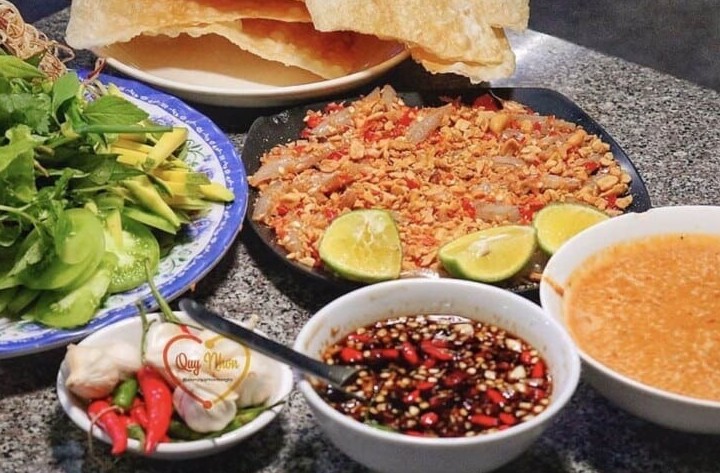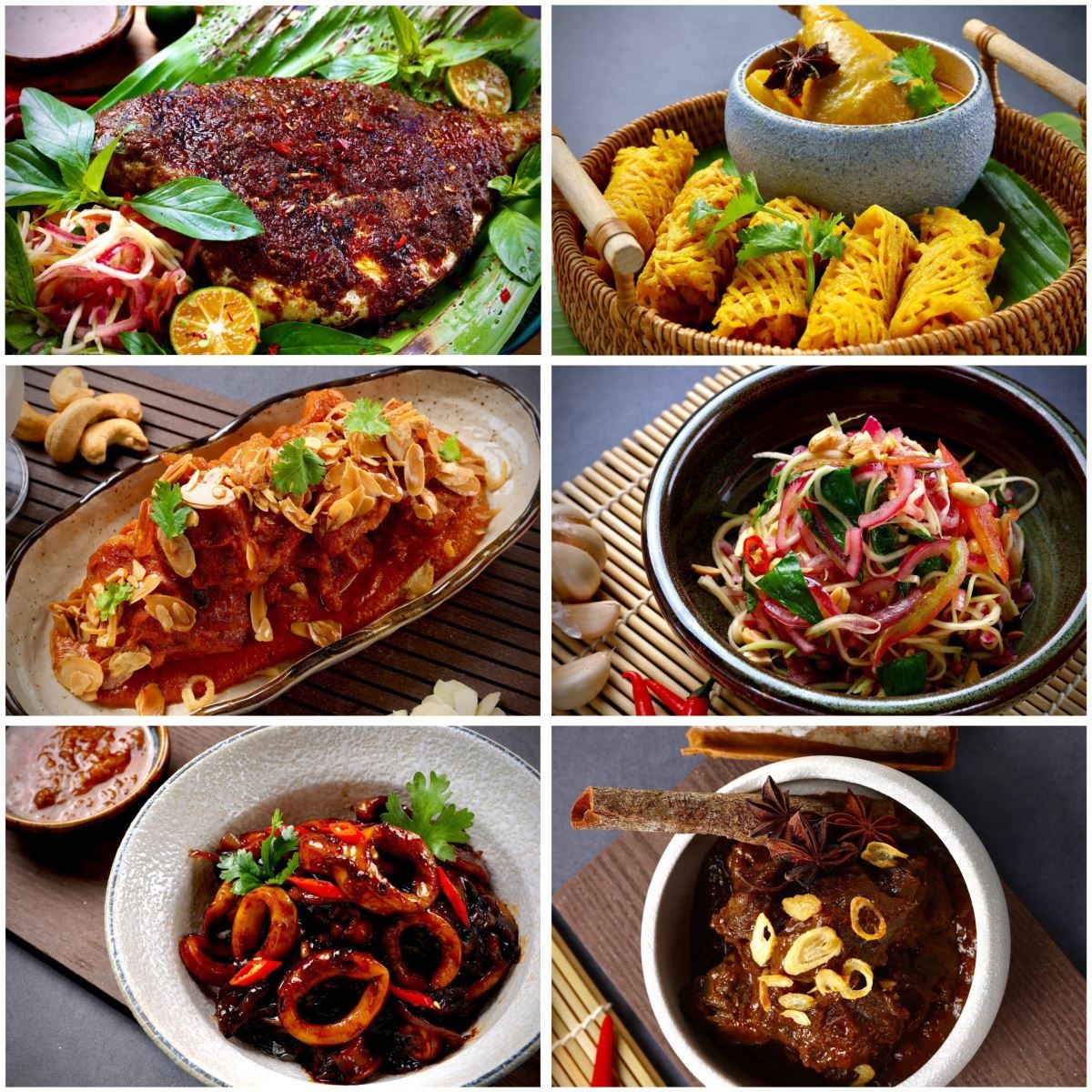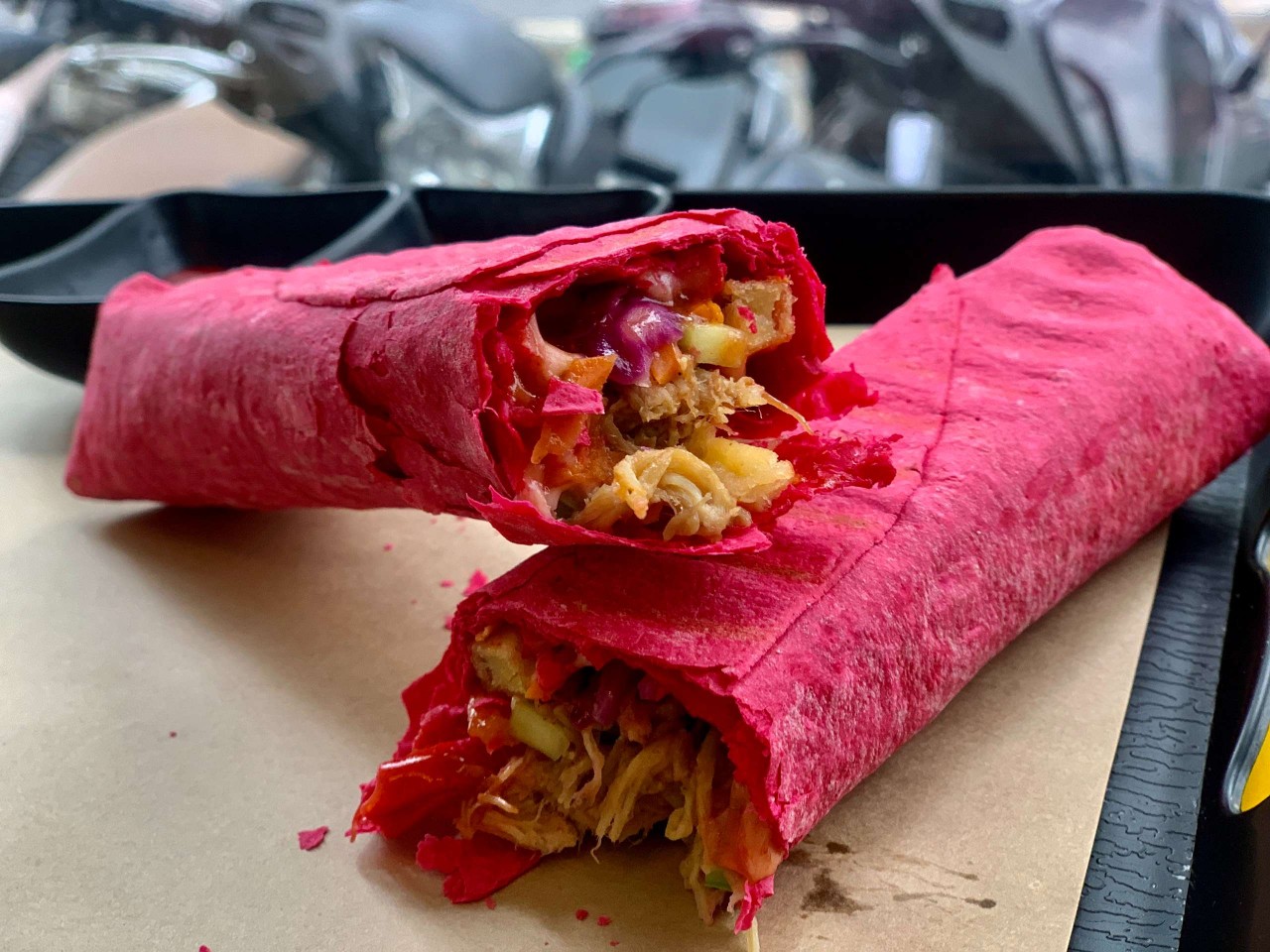Cambodian Cuisine: Taste The Most Famous Traditional Food
Cambodia, officially the Kingdom of Cambodia, is a country located in the southern portion of the Indochinese Peninsula in Southeast Asia. It is 181,035 square kilometres (69,898 square miles) in area, bordered by Thailand to the northwest, Laos to the north, Vietnam to the east, the Gulf of Thailand to the southwest, and maritime borders with Thailand, Malaysia and Indonesia. Phnom Penh is the nation's capital and largest city.
Cambodian cuisine may be lesser known than the world-renowned dishes of neighbouring Thailand and Vietnam, but it’s just as delicious. It has a long history and a diverse range of influences. Here are the 10 most famous traditional food that tourists should visit in Cambodia.
1. Fish Amok
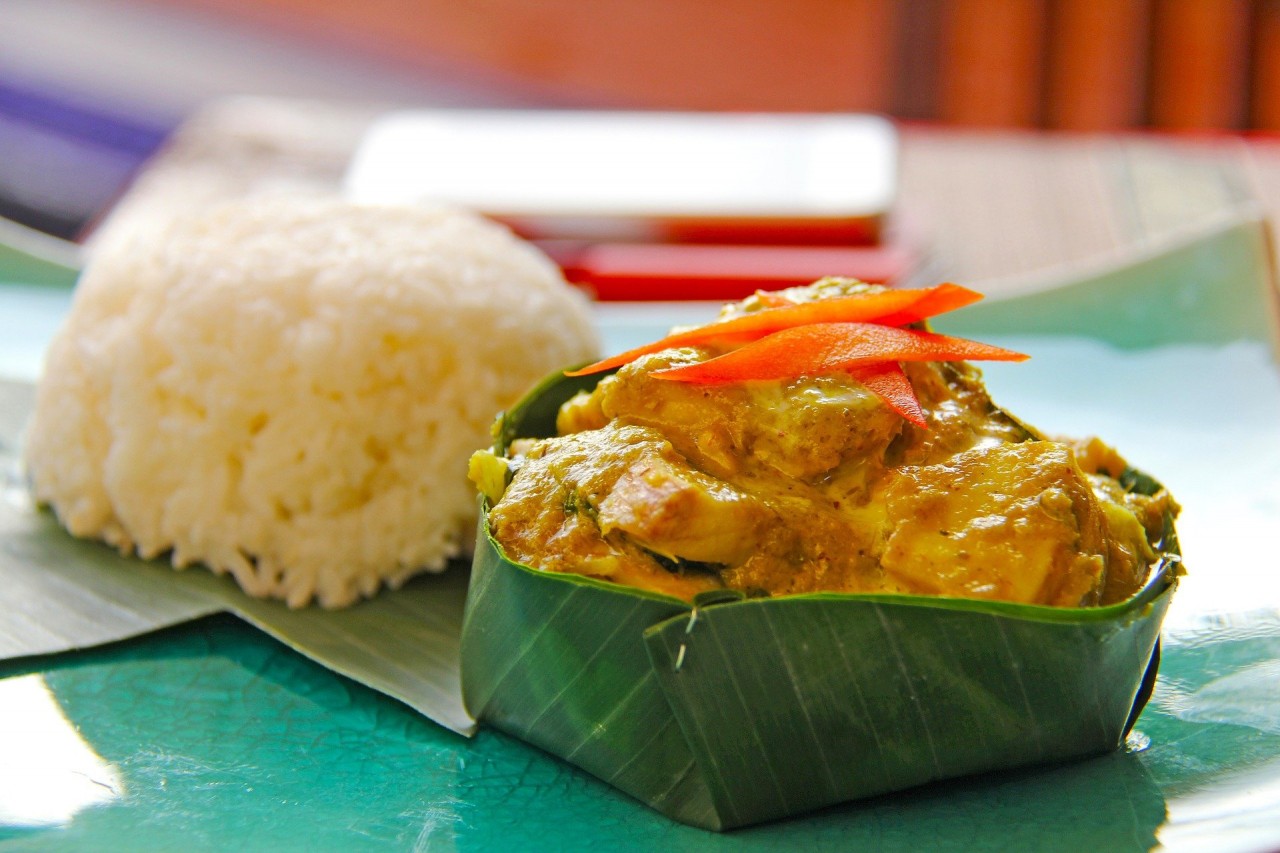 |
| Photo: The International Kitchen |
Fish amok or amok trei is a Khmer steamed fish curry (amok) with a mousse-like consistency, one of Cambodia's national dishes. Fish amok is believed to have been a royal Khmer dish dating back to the Khmer Empire, athough others question it originating in Cambodia.
Fish amok is held in esteem as Cambodia’s signature dish, and the creamy curry can be found in abundance on menus in tourist hubs. Diced fillets of freshwater fish are smothered in coconut milk, eggs, fish sauce and palm sugar. Kroeung — a paste made from pounded spices and other ingredients, such as turmeric, kaffir lime, lemongrass and shallots — is also added. The traditional way to cook the dish is by steaming it in a banana leaf shaped into a bowl, within which it is served.
Many restaurants in Cambodia also serve less traditional versions of amok with chicken, tofu, or beef instead of fish. Other deviations include the use of a store-bought herb paste, other types of kroeung, more liquid consistency and cooking instead of steaming.
2. Kuy teav
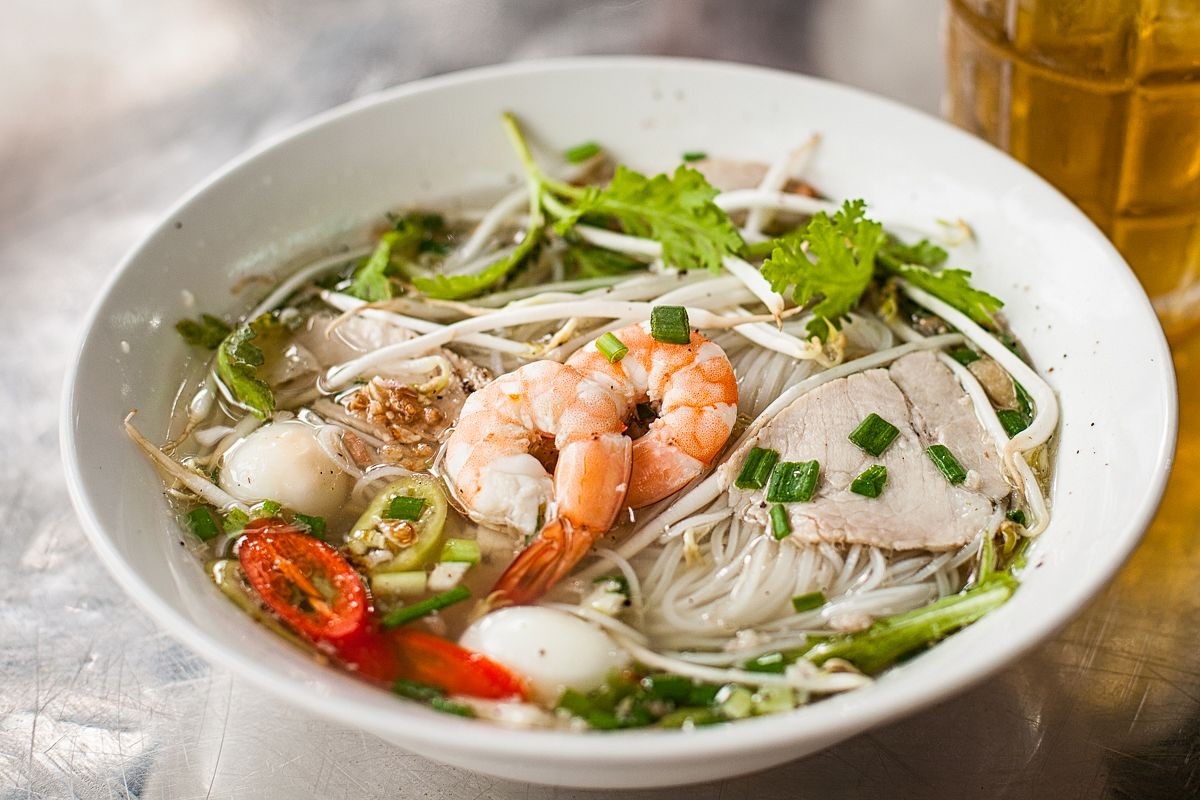 |
| Photo: Saigoneer |
Kuyteav is a Cambodian noodle soup consisting of rice noodles with pork stock and toppings. A popular breakfast dish in Cambodia, kuyteav can be found at marketplace stalls, roadside vendors, restaurants and in shophouses across the country, and is distinguished by its clear broth and array of herbs, aromatics and other garnishes and condiments.
Kuyteav is prepared with partially dry thin squarish rice noodles cooked by quickly immersing the noodles in boiling water. The noodles are then strained, placed into a bowl, and moistened with nutty, caramelized garlic oil. After dressing with a sticky brown liquid made of oyster sauce[citation needed], soy sauce and a pinch of sugar, the bowl is then filled with a clear broth made from pork bones, dried squid, and sugar, and seasoned with a bit of fish sauce. Then the meat toppings are added, which may include an assembly of different types of meat, such as pork loaf, minced pork, pork belly, duck, seafood or offal. Availability is the main factor in what toppings are used in kuyteav; some versions can be quite humble and basic, using only some ground pork and perhaps some dried shrimp for protein, while others can be more time-consuming and extravagant. Finally, when the dish is presented at the table, the diner may add a number of garnishes and aromatics to customize the dish in accordance with his or her preferences.
Moreover, kuyteav may be presented in one of two ways: with all the ingredients in the soup, or with the soup on the side. Both versions can have exactly the same ingredients but allow the diner to control the balance of flavors, spiciness and textures. When the dish is served this way (“dry” as opposed to “wet”) the dish takes on the appearance of a noodle salad. Finally, the Phnom Penh version of kuyteav is the most extravagant and features the most embellishments, owing to the city's historical wealth and importance.
3. Nom banh chok
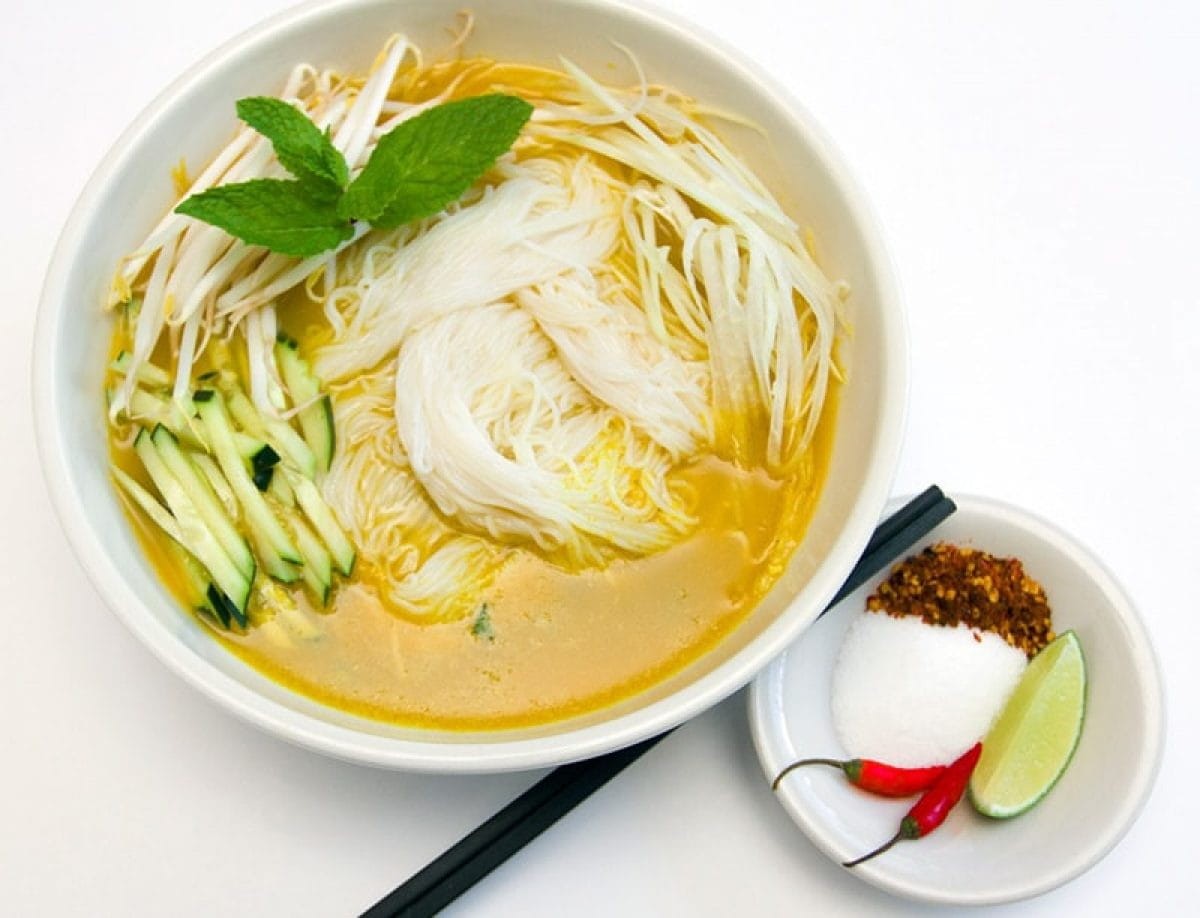 |
| Photo: Vietyouth |
Num banhchok are lightly-fermented Cambodian rice noodles and a breakfast noodle dish. There are many regional variations of num banhchok across the country.
The num banhchok is made by soaking the rice for 2–4 hours and grinding them into a liquidy paste. The paste is pressed into round shapes and dried inside calico bags. Then it is pulverized and turned into a vicious paste, which is extruded into boiling water. The noodles are boiled for 3–4 minutes and transferred to cold water.
The dish consists of fresh noodles laboriously pounded out of rice, topped with a fish-based green curry gravy made from lemongrass, fingerroot ginger, turmeric, and garlic. Fresh cucumbers, banana flowers, long beans, edible flowers, and wild leaves are heaped on top. In Siem Reap, it is served with a sweet sauce called tuk paem made from palm sugar and peanuts.
4. Kari sach moan
 |
| Photo: Cambo Blog |
Less spicy than the curries of neighboring Thailand, Cambodian red curry is made using large local red chilies that are remarkably mild, making for a rich but mellow dish. The curry contains chicken, white radish, sweet potatoes, fresh coconut milk, and kroeung. This delicious dish is usually served at weddings and other ceremonies and special occasions, and can be accompanied with fresh rice noodles, sliced baguette, or white rice.
5. Prahok
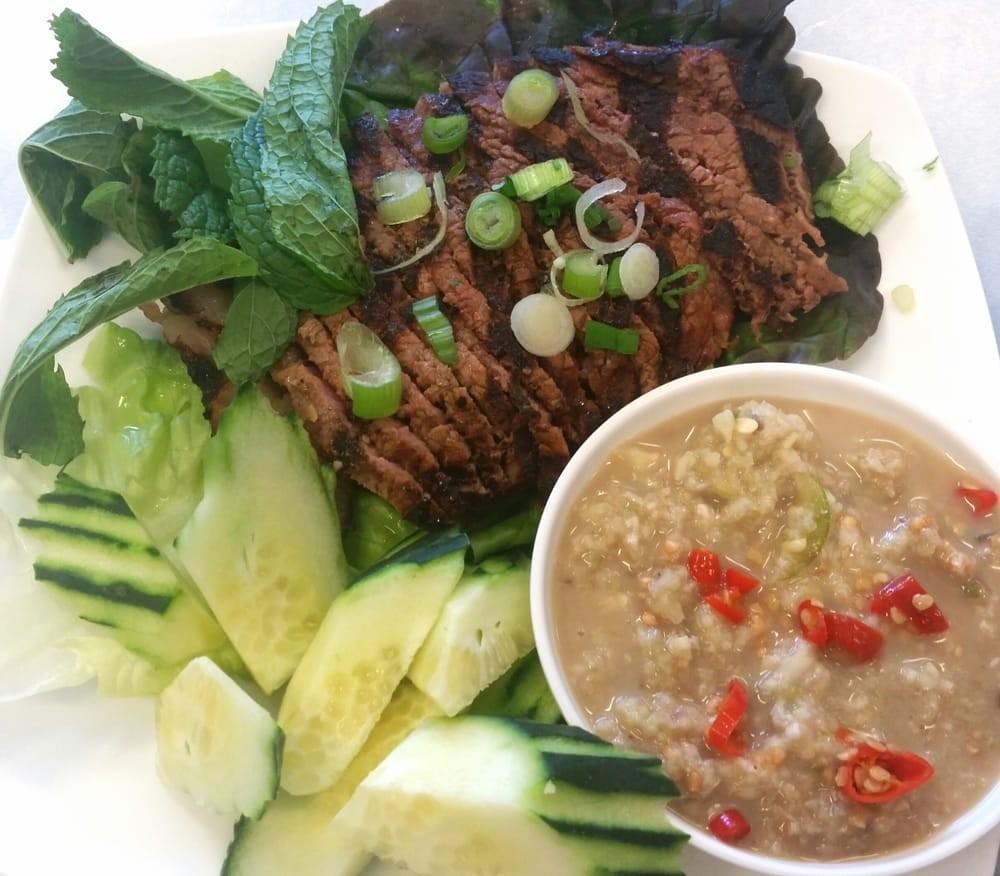 |
| Photo: Laos Tours, Laos Holidays - Travel to Laos |
Prahok is a salted and fermented fish paste (usually of mudfish) used in Cambodian cuisine as a seasoning or a condiment. It originated as a way of preserving fish during the months when fresh fish was not available in abundant supply. Because of its saltiness and strong flavor, it was used as an addition to many meals in Cambodian cuisine, such as soups and sauces. A Cambodian saying goes, "No prahok, no salt", referring to a dish that is of poor flavor or bland thus highlighting its essentiality in Cambodian cuisine. Prahok has a strong and distinct smell, earning the nickname "Cambodian cheese". Prahok is usually eaten as a main course with white rice and vegetables such as yardlong beans, cucumbers, and Thai eggplant.
Prahok is sometimes distributed as a donation to victims of flood or drought by charities and other organizations. It can be eaten cooked or fried, but is usually not eaten raw because of health issues (raw prahok cannot be stored long due to spoilage if not consumed in a short period) and the unpleasant smell it has.
Prahok is obtained by crushing or grinding fresh fish after de-scaling, gutting and cleaning them. They can be crushed underfoot, like wine grapes, or processed by a machine. After the fish is crushed, it is left in the sun for a full day, then salted. The prahok is fermented in large clay jars covered with a lid made of woven bamboo strips. Afterwards, the prahok can be eaten just after 20 days of fermentation, but the best quality prahok is left to ferment for up to three years.
6. Balut
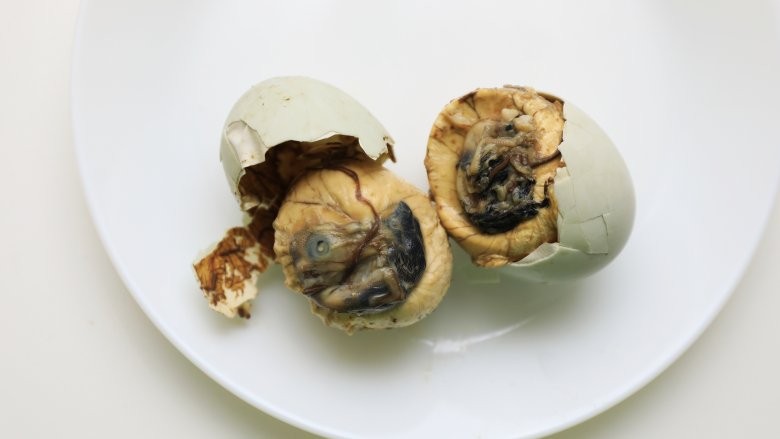 |
| Photo: Mashed |
The practice of making and eating fertilized duck eggs is a widely known practice in Asia. In the Philippines, “balut” is a popularly known Filipino delicacy which is made by incubating duck eggs for about 18 days. However, criticisms against its authenticity and the unstable demand for balut in the market pose challenges to the development of the Philippine balut industry. Consequently, this research aims to trace the history of balut production and consumption in the Philippines by specifically looking into the following. First, it explores the factors that contribute to the discovery and patronage of balut. Second, it identifies the localities that popularized the balut industry. Third, this includes the key industries that started the large scale production of balut. Fourth, it discusses the local ways of balut-making practices in the country. Lastly, it also provides an account of the ways of balut consumption. Through content analysis of secondary data, this research argues that balut remains an authentic Filipino food despite shared patronage in several Asian countries through the localized meanings associated with its consumption, preparation, and distribution.
A balut is a fertilized bird egg (usually a duck) which is incubated for a period of 14 to 21 days, depending on the local culture, and then steamed. The contents are eaten directly from the shell. Balut that is incubated for longer periods have a well-developed embryo and the features of the duckling are recognizable. The partially-developed embryo bones are soft enough to chew and swallow as a whole. The mallard duck (Anas platyrhynchus), also known as the "Pateros duck", is often used to make balut.
7. Lort cha
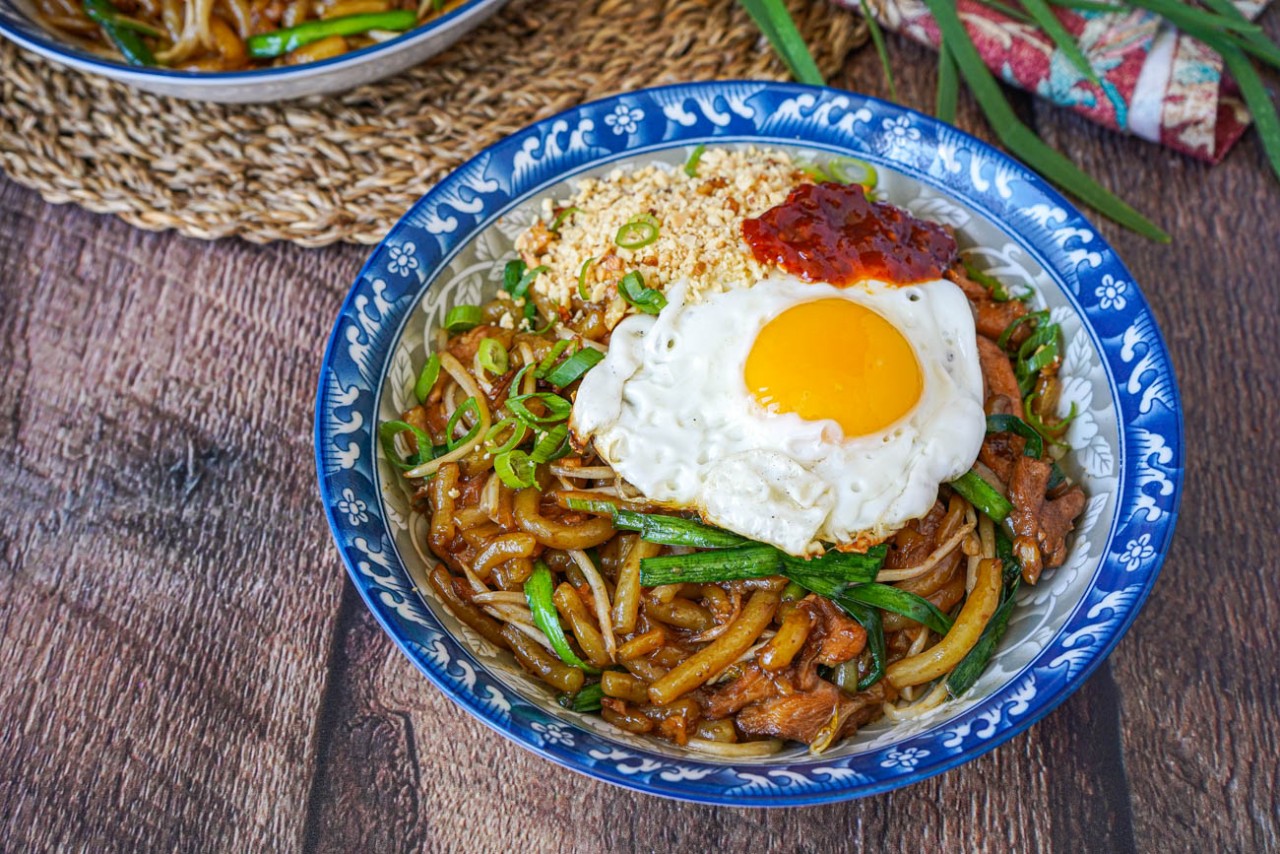 |
| Photo: Tara's Multicultural Table |
A favorite among locals and tourists, Lort Cha is a dish that captures the basic idea or impression that most people have about Cambodia: it’s hassle-free, economical, and — most of all — more than meets the eye. Lort is a type of short rice noodle that is made from flour and water and is sold in any local market. These noodles are then stir-fried (cha means stir-fry in Khmer) together with minced vegetables such as Chinese broccoli, bean sprouts, chives, and green onions. As with most Asian noodles, these ingredients are added in to make an interesting contrast to the “chewy” texture of the noodles themselves and add a bit of crunch in every bite. It makes the dish good for health, as well.
At times, other ingredients such as chicken, pork, beef, or shrimp are added in. Usually, though, the only source of protein that “foodies” can expect getting from this dish is the fried egg that is placed on top when it’s ready for serving. Of course, to add more flavor, the noodles are also mixed in with an ample amount of soy sauce, chili sauce or other condiments.
All in all, Lort Cha is a dish that can be enjoyed by anyone at any time. It can be eaten for breakfast or lunch if you are on-the-go, or as a snack.
In Cambodia, that’s all you need, really— something good to keep you going, regardless of what pace you’re trying to live your life in. Just like a delightful plate of Lort Cha, you’re almost sure to end up finding it anywhere here.
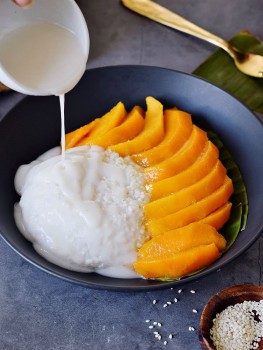 | The Most Delicious and Must-Try Thai Sweet Desserts Thailand is extremely famous for its delicious, colorful, and eye-catching sweet desserts and these dishes offer the best tastes of this country's culinary. |
 | The Origin of Tiramisu: The Beloved Italian Dessert Called "Viagra of 19th Century" Tiramisu, one of the most loved Italian desserts around the world, had an interesting history to the origin of its name that you probably never ... |
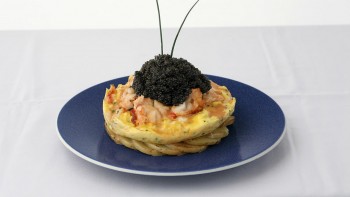 | The Most Expensive Dishes In The World If you are looking for a unique meal and budget is not a big problem, these luxurious and expensive dishes are created by 5-star restaurants ... |
Recommended
 World
World
Pakistan NCRC report explores emerging child rights issues
 World
World
"India has right to defend herself against terror," says German Foreign Minister, endorses Op Sindoor
 World
World
‘We stand with India’: Japan, UAE back New Delhi over its global outreach against terror
 World
World
'Action Was Entirely Justifiable': Former US NSA John Bolton Backs India's Right After Pahalgam Attack
Popular article
 World
World
US, China Conclude Trade Talks with Positive Outcome
 World
World
Nifty, Sensex jumped more than 2% in opening as India-Pakistan tensions ease
 World
World
Easing of US-China Tariffs: Markets React Positively, Experts Remain Cautious
 World
World





